After my Grammarly review, another proofreading software company offered me a premium trial to do a review. This one I’d never heard of – Ginger, a startup out of Tel Aviv. This video shows it best:
Ginger specializes in helping people who are learning English as a second language). According to the website, it uses “patent-pending technology to decipher the semantic meaning and context of text input, by comparing it to billions of similar sentences from the Web.”
Ginger’s emphasis on semantics and context, combined with its home country of Israel, made me interested right away – as I understand it, Hebrew is a language even more complex than English, in that a single word can have many meanings (mah-kor means both “origin/source” and “bird beak”!) – therefore Hebrew-speakers are even more dependant on context than the average English speaker, and therefore presumably specially qualified to create a software like this.
AT A GLANCE
Ginger beats both Grammarly and Writing Dynamo right out of the gate for two reasons:
- Pricing model.
- Free version (not sure the difference between this and basic)
- Basic version = $4.90/month OR one-time payment of $39
- Premium version = one-time payment of $89
What??? Nobody else is doing a one-time payment model! That’s awesome.
- Integration with MS Word
No cut/paste, no uploading documents. No restricting yourself to a few thousand words at a time. Download Ginger and it becomes a convenient yet unobtrusive button at the top of the window when you open Word, and reviews all your text in-doc with a click. FINALLY SOMEONE UNDERSTANDS MY NEEDS! (This is currently available on Windows only. They are working on a Mac version.)
THE NITTY GRITTY
I ran the same tests I ran on Grammarly (which I stole from blog Grammarist):
- Obvious Spelling Errors – Ginger catches them all, beating Grammarly.
- Less Obvious Spelling Errors (like “form” instead of “from”) – Ginger catches all, beating Grammarly
- Grammar and punctuation mistakes – Ginger is split. It makes fewer mistaken corrections than Grammarly did, but fails to catch some problems, including dangling modifiers.
- Questionable Style Choices – Ginger does as poorly as Grammarly.
- Commonly Misused Words – Ginger does as poorly as Grammarly, but makes fewer mistaken corrections than Grammarly did.
- Commonly Confused Words – Ginger catches two out of five, which is two better than Grammarly.
- Redundancies – Ginger does as poorly as Grammarly, but makes fewer mistaken corrections.
- Troublesome Compounds – Better than Grammarly, but a little strange. For instance, for the sentence “We are already to go” instead of suggesting “We are all ready to go,” Ginger suggested “We are already going.”
- New Words, Colloquialisms and Nonstandard Variants – Ginger loses to Grammarly by just a little – suggesting “computer mice” instead of mouses.
- American English vs. British English – Ginger wins for being adjustable between US and UK English, though while it catches “odor/odour,” it failed to catch problems with some other examples. I ran a few more of my own tests for comparison – it caught four out of six issues. Not bad.
- Grammar Myths – Ginger ties with Grammarly.
EXTRA NOTES
PRO: Ginger did catch some mistakes neither I nor MS Word caught.
CON: Instead of proofing all at once and showing you the problems all at once, it proofs one sentence at a time while you watch – you can see the sentences flash at the top of the screen – and only stops when it’s found something wrong. The proofer automatically shuts off when you click to another window, so you have to wait while it works, and you can’t do anything else on your computer in the meantime.
PRO: Since they gave me a Premium trial I got to try out the text-to-speech reader. While it lacked the inflection of a human reader, it did offer the options of male or female voice, US or UK accent, so I had a lot of fun hearing my words read aloud by robot Emma Thompson.
WEIRD: Ginger also has a “Sentence Rephraser” which suggests different ways you can say things (usually synonyms). Sometimes its suggestions were helpful, other times troubling. For “She wondered if they would invite her to play with them” Ginger suggested “She wondered if they would pay for her to flirt with them.” What?!?
CONCLUSION
This is a tough one, especially since, as a native English speaker, I’m not in Ginger’s target audience. I do think Ginger would be helpful for someone who struggles a lot with spelling and major grammar issues, thought they shouldn’t depend on it solely. Compared to what else I’ve seen, the price and the functionality are the best. In its current condition, it’s not much use to me, personally, but I would keep an eye on it for updates.





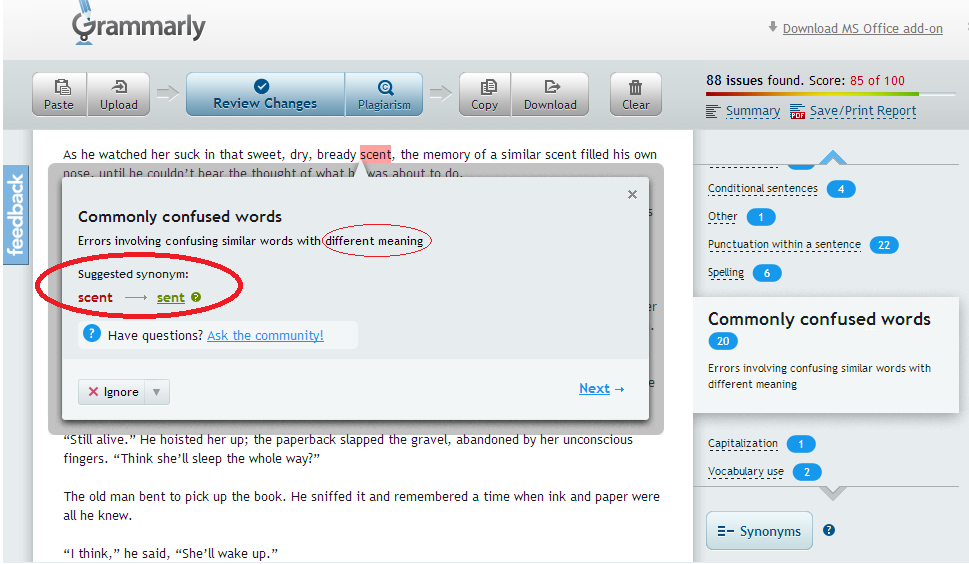

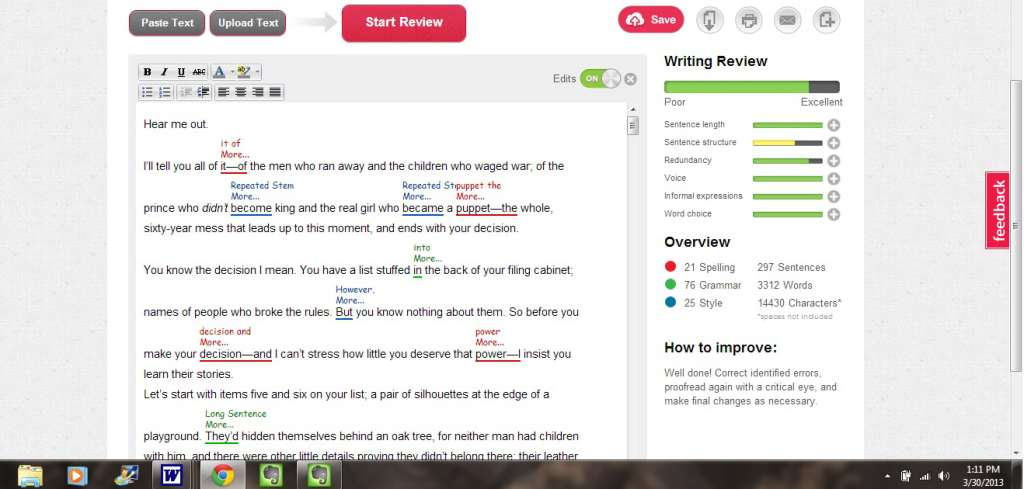
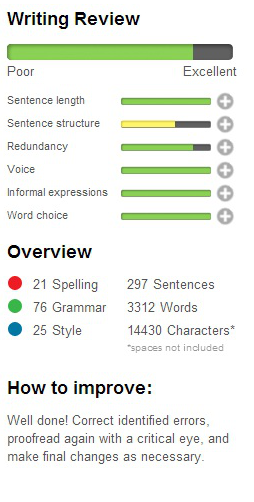
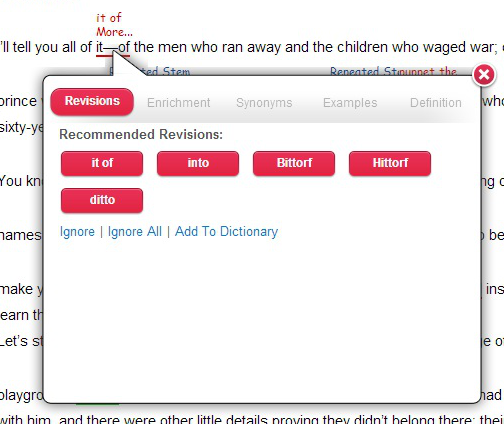
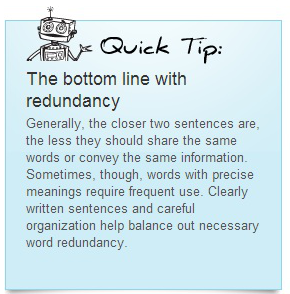
![When the pages are closing in on you. [image by Thanakrit Du]](http://bekindrewrite.files.wordpress.com/2013/01/pagesclosingin.jpg?w=300)
